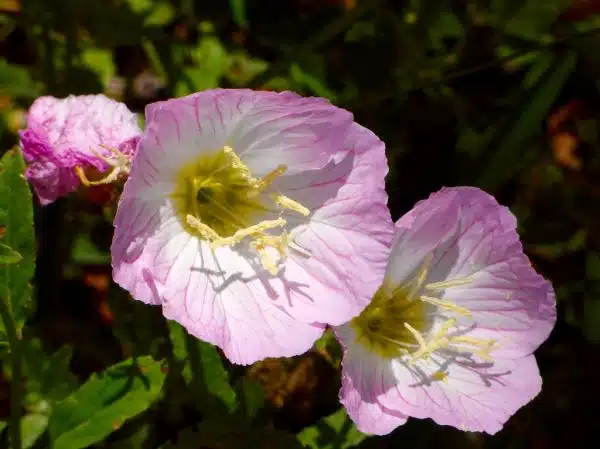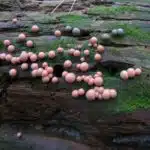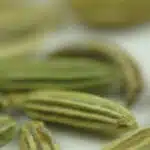Pink Evening Primrose, also known as Oenothera speciosa, is a stunning and delicate plant that requires minimal care. With its beautiful pink flowers that bloom in the evening, it has become a popular choice for gardeners who want to add color and beauty to their landscapes. As a horticulture expert, I have seen many people struggle with growing and caring for Pink Evening Primrose. In this article, I will provide you with all the information you need to successfully grow and care for this beautiful plant.
Pink Evening Primrose is native to North America and can be found in many regions of the United States. It is a hardy perennial plant that can grow up to two feet tall and two feet wide. The plant produces clusters of pink flowers that open in the evening and close during the day, giving it its common name – Evening Primrose. The blooms are also fragrant, attracting pollinators such as bees and butterflies. Growing Pink Evening Primrose is relatively easy as it prefers well-draining soil, full sun exposure, and moderate watering. However, proper care is essential for the plant’s growth and overall health. In the following sections, we will discuss how to choose the right location for planting Pink Evening Primrose, soil requirements, watering needs, pruning techniques, disease prevention measures, among other essential tips for growing Pink Evening Primrose successfully.
Understanding Pink Evening Primrose
Pink Evening Primrose, scientifically known as Oenothera speciosa, is a perennial flowering plant that belongs to the Onagraceae family. This plant can grow up to two feet tall and produces beautiful pink flowers that bloom in the evening, giving it its name. The Pink Evening Primrose is native to North America and can be found in various regions such as prairies, meadows, and along streams.
Uses and benefits of this plant are numerous. The Pink Evening Primrose has been used for medicinal purposes by Native Americans for centuries. It contains high levels of gamma-linolenic acid (GLA), an essential fatty acid that has anti-inflammatory properties. Ingesting the oil extracted from its seeds can help alleviate symptoms of skin conditions such as eczema, psoriasis, and acne. Additionally, tea brewed from its leaves can help ease menstrual cramps and stomach discomfort.
Aside from its medicinal properties, the Pink Evening Primrose is also an excellent addition to any garden or landscape. Its vibrant pink flowers attract butterflies and hummingbirds, making it a perfect choice for pollinator gardens. This low maintenance plant thrives in well-draining soil under full sun exposure but can tolerate partial shade. In the next section, we will discuss how to choose the right location for planting this beautiful flowering plant.
Choosing The Right Location For Planting
The location you choose for planting your pink evening primrose plays a critical role in its growth and development. When selecting the spot to plant your pink evening primrose, it is essential to consider factors such as light, soil type, and drainage. Pink evening primroses thrive best in full sun or partial shade. Therefore, the ideal location should receive at least six hours of sunlight each day.
The best season to plant pink evening primrose is during early spring when the soil temperature is above 60°F. Planting during this period will give enough time for root establishment before summer sets in. Soil preparation is also crucial when planting pink evening primrose. Ensure that the soil pH ranges between 5.5 and 7.0, with excellent drainage capabilities.
To ensure that your pink evening primrose thrives optimally, avoid planting it in areas with compacted soil or heavy clay soils that drain poorly. Instead, opt for well-drained loamy soils that have been amended with organic matter such as compost or aged manure. In the subsequent section, we will discuss how you can prepare your soil adequately to provide optimal growing conditions for your pink evening primrose plants.
Soil Requirements For Pink Evening Primrose
Like the heart of a human being, soil is the essence of plant growth. Without it, no plants can survive. As such, it is crucial to provide your Pink Evening Primrose with the best possible soil conditions to encourage healthy growth and blooming. The ideal soil for Pink Evening Primrose is well-draining soil with a pH level between 6.0 and 7.5.
When planting Pink Evening Primrose, make sure to choose a site that has good drainage as waterlogged soil can be detrimental to its growth. Avoid heavy clay soils and instead opt for sandy or loamy soils that drain well. If your soil doesn’t drain well, consider adding organic matter like compost or peat moss to improve drainage.
To ensure optimal growth, it’s important to fertilize your Pink Evening Primrose regularly with the best fertilizers for this particular plant species. Granular fertilizer high in phosphorous and potassium will help promote flowering while a liquid fertilizer can provide quick nutrients to boost its overall health. However, be mindful not to over-fertilize as this could cause harm instead of benefiting the plant.
Soil Requirements for Pink Evening Primrose:
- Well-draining soil with a pH level between 6.0 and 7.5
- Good drainage is essential; avoid waterlogged soil
- Add organic matter like compost or peat moss if necessary
- Fertilize regularly using granular fertilizer high in phosphorous and potassium or liquid fertilizer
Common soil problems for Pink Evening Primrose include poor drainage leading to root rot and an incorrect pH level causing nutrient deficiencies. It’s essential to monitor these issues closely and take corrective measures promptly if they arise.
Moving forward, let’s explore how sun exposure and temperature preferences play a role in growing healthy Pink Evening Primrose plants.
Sun Exposure And Temperature Preferences
Pink evening primrose is a stunning plant that thrives in warm temperatures and bright sunlight. As such, it is essential to understand the sun exposure and temperature preferences of this plant for optimal growth and health. Pink evening primrose requires full sun exposure, meaning at least six hours of direct sunlight every day to thrive. Insufficient sunlight can lead to stunted growth, weak stems, and reduced blooming. In contrast, too much shade can cause etiolation or stretching of the stems, resulting in weaker plants.
Pink evening primrose is a heat-loving plant that prefers warm temperatures between 70-85°F during its growing season. It does not tolerate extreme cold well and will need extra winter care when temperatures drop below freezing. During winters, it’s necessary to provide some form of protection by mulching or covering the soil around the base of the plant with straw, leaves or other organic matter which helps insulate the roots from frost damage.
Proper sun exposure and temperature management are vital for successful pink evening primrose cultivation. Understanding these preferences will allow you to create an optimal environment for your plants to thrive throughout their growing season. In the next section, we will discuss watering needs and techniques that will further help nurture your pink evening primrose garden into a beautiful oasis.
Watering Needs And Techniques
Like a delicate ballerina, the pink evening primrose blooms in the evening, adding a touch of elegance to any garden. While this hardy plant can withstand various weather conditions, its growth and survival still depend on proper care. In the previous section, we discussed the plant’s sun exposure and temperature preferences. In this section, let us delve into the watering needs and techniques for the pink evening primrose.
Drought tolerance is one of the most remarkable characteristics of this flowering plant. It can survive long dry spells without showing signs of withering. However, while it can tolerate drought, it does not mean that it should be left without water for extended periods. Overwatering risks are present when growing pink evening primrose. Too much water can lead to root rot and other fungal diseases. Ensure that you water your plants deeply but infrequently to avoid such problems.
To keep your pink evening primrose healthy, make sure that you provide consistent moisture around its roots. Watering once or twice a week should suffice unless you live in an area with exceptionally high temperatures or low humidity levels. Be mindful of signs of stress such as wilting or yellowing leaves as they may indicate under or overwatering issues.
As with any other plant, proper watering techniques are crucial to ensure optimal growth and blooming potential for your pink evening primrose. But watering alone is not enough; fertilization and nutrient requirements also play a significant role in getting those beautiful blooms that you desire. Let us discuss more about these essential aspects in the next section.
Fertilization And Nutrient Requirements
Fertilizing pink evening primrose is essential for its growth and development. The plant requires a balanced fertilizer, with equal portions of nitrogen, phosphorus, and potassium. Fertilizer application should be done during the growing season, from spring to late summer. It is advisable to feed the plant once a month using a slow-release granular fertilizer.
It is important to monitor nutrient deficiency symptoms in pink evening primrose as it can affect their growth and health. Nitrogen deficiency shows up as yellowing leaves while phosphorus deficiency manifests itself through stunted growth and small leaves. Potassium deficiency displays irregular leaf margins and weak stems. If any of these symptoms are observed, it is necessary to increase fertilizer application or add organic matter to the soil.
Fertilization plays a crucial role in keeping pink evening primrose healthy and vibrant throughout their lifecycle. Proper feeding ensures that the plant receives all the necessary nutrients required for optimal growth and blooming. With adequate care, pink evening primrose will thrive well in your garden, making it an attractive addition to your landscape. In the next section, we will discuss propagation methods for pink evening primrose plants.
Propagation Methods For Pink Evening Primrose
Seeding is the most common propagation method for pink evening primrose, and involves collecting the mature seeds and planting them directly into an outdoor flower bed. Cuttings can be taken from the stems of pink evening primrose during the growing season and rooted in soil to create new plants. Division is the process of separating the plant into multiple sections, and replanting them in separate areas. In order to ensure successful propagation, it is important to observe the ideal soil conditions and provide adequate water, light, and space for each method. Planting the seeds during the proper season and ensuring the cuttings are taken from healthy plants are also important considerations. By following these propagation methods and guidelines, pink evening primrose can be grown and cared for with ease.
Seeding
Seeding is one of the most common and easiest propagation methods for pink evening primrose. Many gardeners prefer this method as it allows them to grow new plants from scratch, giving them control over the entire process. To begin with, it is best to choose a sunny location with well-draining soil. The seeds can be sown directly into the ground in early spring or fall after the last frost has passed. It is important to keep the soil moist until the seedlings emerge.
Best practices when seeding pink evening primrose include preparing the soil by removing any rocks, weeds, or debris that may hinder growth. It is also essential to ensure that the seeds are planted at the right depth, which should be no deeper than ¼ inch. Overwatering can lead to root rot and other issues, so it’s crucial to avoid this common mistake by watering only when necessary.
Once the seedlings have emerged, it’s important to thin them out by spacing them at least six inches apart. Regular watering and fertilization will help promote healthy growth and blooming. With proper care and attention, pink evening primrose grown from seeds can thrive for many years, providing a beautiful addition to any garden landscape.
Cuttings
Another popular propagation method for pink evening primrose is through cuttings. This method involves taking a part of an existing plant and rooting it to create a new one. The benefits of using cuttings include the ability to produce an exact clone of the parent plant and a shorter time frame for maturity compared to seed propagation.
Timing is crucial when taking cuttings from pink evening primrose. The best time to take cuttings is in early summer, as this is when the plant is actively growing and producing new shoots. It’s essential to choose healthy stems that are free from disease or damage, and at least four inches long with several leaves attached.
To start the propagation process, remove the lower leaves from the cutting’s bottom two inches before dipping it into rooting hormone powder. Then insert the cutting into well-draining soil or a mixture of sand and peat moss. Keep the soil moist but not waterlogged, and within two weeks, roots should begin to form. Once rooted, transfer the cutting into its permanent location in well-draining soil, where it can grow into a mature plant over time.
Division
Propagation is a common practice in horticulture that involves propagating plants to produce more of the same species. Pink evening primrose is a popular plant that can be propagated through various methods, including seed propagation and cuttings. Another propagation method for this plant is division, which involves dividing an existing plant into smaller sections and replanting them. This method has its benefits and drawbacks.
The benefits of division include the ability to propagate an existing mature plant quickly, resulting in faster establishment and growth of new plants. It also ensures genetic uniformity as all the new plants are identical to the parent plant. However, this method may not be suitable for all plants, especially those with shallow root systems or those that are sensitive to root disturbance.
To divide pink evening primrose, start by digging up the entire plant carefully and shaking off any excess soil. Then, using a sharp knife or garden fork, divide the root mass into smaller sections with at least three shoots each. Ensure that each section has enough roots to support it before replanting it in well-draining soil. Water thoroughly after planting and keep the soil moist until new growth appears.
Overall, division is a useful propagation method for pink evening primrose that provides numerous advantages to gardeners looking to expand their collection quickly. However, it’s essential to assess whether this method is suitable for your particular plant species before attempting it as some plants may not tolerate being divided well.
Pruning Techniques For Optimal Growth
To ensure optimal growth of pink evening primrose, proper pruning techniques should be implemented. Pruning is a horticultural practice that involves removing specific plant parts, such as branches or leaves, to improve the overall health and appearance of the plant. By pruning pink evening primrose plants, you can encourage better blooming and prevent overgrowth.
Proper timing is crucial when it comes to pruning pink evening primrose plants. It’s best to prune them in late winter or early spring before new growth appears. This allows for ample time for the plant to recover from any damage caused by pruning before blooming season begins. Additionally, it’s important to use the right pruning tools, such as sharp shears or loppers, to avoid damaging the plant.
When pruning pink evening primrose plants, there are some key techniques to keep in mind. These include removing dead or diseased stems and branches, thinning out crowded areas of the plant, and cutting back overly long stems. It’s also recommended to leave some healthy foliage on the plant so that it can continue photosynthesizing and producing energy for future growth.
- 5 tips for proper pruning of pink evening primrose:
- Cut back up to one-third of the total height of the plant.
- Use clean and sterilized pruning tools.
- Remove any crossing or rubbing branches.
- Prune after blooming has finished to reduce transplant shock.
- Avoid cutting too close to main stems or trunks.
As with any horticultural practice, proper technique is key when it comes to pruning pink evening primrose plants. By following these guidelines and utilizing appropriate timing and tools, you can promote healthy growth and vibrant blooms in your garden. In the next section we will discuss common pests and diseases that may affect these plants and how best to manage them.
Pests And Diseases To Watch Out For
Proper pruning encourages optimal growth in pink evening primrose. However, it is not the only factor that contributes to its health and vitality. This species is susceptible to a variety of pests and diseases, which can be detrimental if left untreated. Prevention techniques and natural remedies are crucial in maintaining a thriving plant.
One common problem that pink evening primrose faces is aphid infestation. These tiny insects suck the sap from the plant, causing stunted growth and distorted leaves. One way to prevent aphids is by introducing ladybugs into your garden as they feed on aphids. Another natural remedy is spraying a mixture of water and dish soap onto the affected areas, which suffocates the aphids.
Another issue that may arise is fungal diseases such as powdery mildew or botrytis blight. These diseases can be prevented by ensuring proper air circulation around the plant and avoiding overwatering. In case of an outbreak, removing any infected plant parts and applying a solution of neem oil mixed with water can help eradicate fungal spores.
To maintain healthy pink evening primrose plants, prevention techniques should be implemented along with natural remedies for any problems that may occur. By being vigilant about pest control measures and promoting good growing conditions for your plants, you will ensure their continued vitality for years to come. In the next section, we will discuss prevention and treatment of common problems in more detail.
Prevention And Treatment Of Common Problems
Preventative measures are essential for the maintenance of healthy pink evening primrose plants. One common issue is the onset of fungal diseases, which can be prevented by providing proper ventilation and air circulation. Additionally, regularly removing dead plant material and avoiding overhead watering can significantly reduce the likelihood of infection. Proper soil drainage is also important in preventing fungal growth.
If problems do arise with pink evening primroses, there are several common treatments that can be employed. For example, if fungal diseases have taken hold, applying a fungicide can help eliminate the problem. Similarly, if pests such as aphids or spider mites have infested the plants, using an insecticidal soap or oil may provide relief. It is important to carefully follow dosage instructions when using these treatments to avoid causing harm to the plant.
To promote healthy growth and blooming, it is crucial to identify warning signs early on. This includes recognizing symptoms such as yellowing leaves or stunted growth which may indicate nutrient deficiencies or root rot. Regular monitoring of plant health coupled with timely intervention can help prevent more serious issues from developing. In addition, maintaining proper watering and fertilization regimes tailored to the specific needs of pink evening primrose plants can help ensure their overall health and vitality.
Moving forward towards companion plants for pink evening primrose, it is important to consider options that will complement its unique characteristics while also promoting optimal growing conditions.
Companion Plants For Pink Evening Primrose
While prevention and treatment of common problems are crucial in maintaining the health of pink evening primrose, choosing the right companion plants can also benefit their growth. Companion planting is a technique that involves growing different plants together to improve soil health, repel pests, and attract beneficial insects. By selecting the right companions, gardeners can create an environment that fosters plant growth and diversity.
Companion plant ideas for pink evening primrose include herbs such as basil, mint, and sage. These plants not only add fragrance to the garden but also deter pests like aphids and spider mites. Additionally, planting flowering annuals like marigolds or zinnias alongside pink evening primrose can attract pollinators like bees and butterflies while adding color contrast to the garden.
Benefits of companion planting extend beyond pest control and pollinator attraction. Certain plants have symbiotic relationships with each other where one plant benefits from another’s presence. For example, planting legumes like beans or peas near pink evening primrose can increase soil nitrogen levels through nitrogen fixation. Similarly, intercropping with leafy greens like lettuce or spinach can provide shade for the primroses during hot summer months.
Considering companion plants is an essential step in creating a thriving garden ecosystem for pink evening primrose. With proper planning and selection of complementary plants, gardeners can enjoy healthier plants while decreasing the need for synthetic fertilizers or pesticides. In the next section, we will discuss some popular varieties of pink evening primrose that are worth considering for your garden.
Pink Evening Primrose Varieties To Consider
Oenothera fruticosa is a fast-growing species of pink evening primrose that is native to North America. It is hardy in USDA zones 4 to 8 and is drought tolerant. Oenothera speciosa is a species of evening primrose that is native to the western United States and is hardy in USDA zones 4 to 10. Oenothera caespitosa is a species of evening primrose that is native to the western United States and is hardy in USDA zones 5 to 10. Oenothera berlandieri is a species of evening primrose that is native to the southwestern United States and Mexico and is hardy in USDA zones 5 to 9. Oenothera grandiflora is a species of evening primrose that is native to the southwestern United States and Mexico and is hardy in USDA zones 6 to 9.
Oenothera Fruticosa
Oenothera fruticosa, commonly known as Sundrops, is a species of pink evening primrose that is native to North America. This perennial plant can reach up to three feet in height and two feet in width when matured. It bears beautiful bright yellow flowers with four petals that bloom from late spring to mid-summer.
Sundrops are easy to grow and care for, making them perfect for novice gardeners. They prefer full sun exposure and well-draining soil. Once established, they require little watering and maintenance. Deadheading the spent flowers will encourage more blooms throughout the season.
Apart from its ornamental value, Oenothera fruticosa has medicinal properties that have been used for centuries by Native Americans. The plant contains high levels of gamma-linolenic acid (GLA), which helps reduce inflammation and improve skin health. Sundrops oil extracted from the seeds is also used as an herbal remedy for premenstrual syndrome (PMS) and symptoms of menopause.
In conclusion, Oenothera fruticosa is a great addition to any garden due to its stunning beauty and easy-care requirements. Additionally, its medicinal properties make it a valuable plant in herbal medicine practices. By incorporating this pink evening primrose variety into your garden, you can bring both aesthetic pleasure and potential health benefits into your life.
Oenothera Speciosa
Another pink evening primrose variety that you might want to consider for your garden is Oenothera speciosa, commonly known as showy evening primrose. As its name suggests, this plant produces large, showy flowers that come in shades of pink and white. It is native to North America and can grow up to three feet tall with a spread of one to two feet. Showy evening primrose blooms from mid-spring to early summer and attracts pollinators such as bees and butterflies.
If you want to grow Oenothera speciosa in your garden, here are some planting tips that you can follow. This plant prefers full sun exposure but can tolerate partial shade. It also thrives in well-draining soil that is moderately fertile. You can propagate showy evening primrose through seedlings or division, and it is best planted in the spring or fall. Once established, this plant requires minimal watering and maintenance.
Aside from its ornamental value, Oenothera speciosa has medicinal benefits that have been recognized by various cultures throughout history. The roots of this plant contain compounds that have anti-inflammatory properties and are used as a traditional remedy for rheumatism and arthritis. The leaves and flowers also contain high levels of antioxidants, which help protect cells from damage caused by free radicals. Furthermore, the seeds of showy evening primrose produce oil that is rich in gamma-linolenic acid (GLA), an essential fatty acid that has been shown to alleviate symptoms of eczema, acne, and other skin conditions.
Incorporating Oenothera speciosa into your garden not only adds beauty but also provides potential health benefits for you and your family. By following planting tips and caring for this plant properly, you can enjoy its stunning flowers while reaping its medicinal benefits at the same time.
Harvesting And Using Pink Evening Primrose
To harvest pink evening primrose, it is important to wait until the flowers have fully bloomed and the petals are open. This ensures that the seeds have matured and are ready to be collected. The best time to harvest is in the morning when the dew has dried, but before the heat of the day sets in.
Once harvested, the seeds can be used for culinary purposes. The seeds have a nutty flavor that pairs well with salads or roasted vegetables. They can also be ground into a paste and used as a spread on bread or crackers. Additionally, pink evening primrose leaves can be used as a tea or added to soups for their unique flavor.
There are several techniques for harvesting pink evening primrose seeds. One method is to cut off the entire flower stalk and hang it upside down in a dry, well-ventilated area until the seeds naturally fall out of the pods. Another method is to gently shake the pods over a container to collect the seeds. It is important to store harvested seeds in an airtight container in a cool, dark place until ready for use.
| Culinary Uses of Pink Evening Primrose Seeds | How To Use |
|---|---|
| Salad topping | Sprinkle seeds on top of your favorite salad for added crunch and nuttiness |
| Roasted vegetable seasoning | Toss vegetables with olive oil and pink evening primrose seeds before roasting |
| Seed paste spread | Grind seeds into a paste with olive oil and use as a spread on bread or crackers |
| Tea infusion | Steep pink evening primrose leaves in hot water for 5-10 minutes |
Moving onto frequently asked questions about growing pink evening primrose…
Frequently Asked Questions About Growing Pink Evening Primrose
Now that we have discussed the harvesting and use of pink evening primrose, let us move on to some frequently asked questions about growing this beautiful plant. The following FAQ format will answer some of the most common queries related to the cultivation and care of pink evening primrose.
What are the best growing conditions for pink evening primrose? Pink evening primrose requires full sun exposure and well-draining soil. It can tolerate poor soil, including sand or rocky areas, but it is essential to ensure that the soil is not heavy clay. Additionally, this plant prefers dry to medium moisture levels, making it an ideal choice for arid regions where other plants may struggle.
How do I propagate pink evening primrose? Propagation of this species is relatively easy as it readily self-seeds. However, if you want to start new plants deliberately, you can collect seeds in late summer or early fall and sow them directly in the garden bed or container. Alternatively, you can divide established clumps in spring or fall by carefully digging up a portion of the root system and replanting it elsewhere.
In summary, understanding the best growing conditions for pink evening primrose is crucial for its thriving growth. Additionally, propagating this plant is relatively simple through self-seeding or division techniques. In the next section, we will explore some troubleshooting tips for common issues that may arise during the cultivation of pink evening primrose.
Troubleshooting Common Issues With Pink Evening Primrose
Pink evening primrose is a hardy plant that can survive in various conditions. However, like all plants, it is not completely immune to issues that may arise. One common issue with pink evening primrose is fungal infections. These infections often manifest as yellowing or browning of the leaves and stems, and in severe cases, wilting and death of the plant.
Common solutions to fungal infections include removing any infected parts of the plant immediately and disposing of them properly. Additionally, spraying the plant with a fungicide can help prevent further spread of the infection. Prevention tips include ensuring that the soil is well-draining and not too moist, avoiding watering the leaves directly, and providing adequate air circulation around the plant.
Another issue that may arise with pink evening primrose is pest infestations such as aphids or snails. These pests can cause damage to the leaves and stems of the plant, leading to stunted growth or even death if left untreated. Common solutions include manually removing pests from the plant or using appropriate insecticides or repellents. Prevention tips include regularly inspecting plants for signs of infestation and keeping surrounding areas free from debris where pests may hide.
In summary, while pink evening primrose is generally a resilient plant, it is still susceptible to common issues such as fungal infections and pest infestations. By taking preventative measures such as proper watering techniques and regular inspections, these issues can be avoided altogether. If problems do arise, however, there are several common solutions available to treat them effectively.
Conclusion
Pink evening primroses are a beautiful addition to any garden and can attract various pollinators. Understanding the plant’s needs and preferences is crucial for its growth and survival. When choosing a location, consider factors such as soil quality, sun exposure, and temperature preferences. It’s essential to ensure that the soil is well-draining and nourishing, with a pH level between 6.0-7.5.
Pink evening primrose prefers full sun exposure but can tolerate partial shade in hot climates. The plant thrives in warm temperatures between 70-80°F during the day and 60-70°F at night. Watering should be done deeply but infrequently to prevent waterlogging, which can lead to root rot.
There are several varieties of pink evening primrose with different blooming periods, sizes, and colors to choose from when planting your garden. Harvesting pink evening primrose is relatively easy; you need to wait until the flowers bloom fully before cutting them off the stem.
Despite being an easy plant to grow, pink evening primrose may face some issues such as pests or diseases. However, with proper care practices like regular pruning and fertilization, most problems can be prevented or solved.
In conclusion, growing and caring for Pink Evening Primrose requires careful consideration of its unique needs and preferences. As a horticulture expert, I recommend that you pay attention to the plant’s location, soil requirements, sun exposure preferences, watering techniques, varieties selection for optimal growth yields. While it may seem straightforward at first glance growing Pink Evening Primrose has its intricacies that must be considered if one wishes to succeed in cultivating this beautiful flower successfully!
Image Credits
- “Pink Evening Primrose” by M.P.N.texan (featured)





























